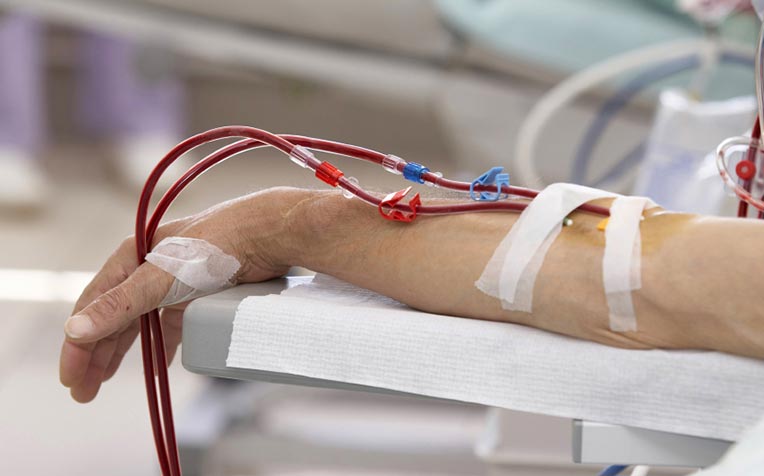
Kidney failure patients with high levels of antibodies need to undergo plasmapheresis before their transplant.
This was the case with the patient who underwent the new treatment protocol. Following a test, known as the T-cell crossmatch, her donor was found to be incompatible as they don’t share the same HLA.
Although the two are siblings, their tissues are immunologically incompatible with each other, and these differences also led to the patient having too many antibodies against the donor. In such cases, a transplanted kidney has a more than 80 per cent chance of being rejected if the antibodies are not removed.
“In the old days, the patient would have been turned away, but in the last decade or so, advances in transplantation medicine have led to treatment protocols being developed in the US to overcome this barrier,” said Dr Kee.
Undergoing plasmapheresis
As part of SGH’s new treatment, the patient was given a medicine called intravenous immunoglobulin, or IVIG, every month for three consecutive months.
She also underwent nine rounds of plasmapheresis, a procedure that is somewhat similar to dialysis, where her blood was extracted and put through a machine for the antibodies to be removed.
At the end of the treatment, the patient’s levels of antibodies had dropped to below the threshold for a transplant to take place. After her surgery, she went through further rounds of plasmapheresis to keep her antibody levels down, and she was discharged after two weeks in hospital.
It’s been more than a year since her transplant in early 2013. She has not had any major complications to date, her kidney is functioning normally, and the antibodies that target her donor cells have not returned.
“From studies, we know that over the long term, the antibodies can start appearing again. They can come back right after the transplant, or years after. When they do appear, they are associated with poor outcomes, and can lead to a rejection of the kidney as well,” said Dr Kee.
For that reason, patients who undergo this risky procedure are closely monitored after their transplants.
High-risk procedure for a very few kidney failure patients
Not everyone who fails the pre-transplant T-cell crossmatch test is a candidate for the new transplant protocol. The patient and potential donor must meet strict criteria before the go-ahead is given. The recipient, donor and their families go through many counselling sessions to understand and accept the procedure and its risks.
“It’s very high-risk, the patient must be able to accept the risks, and his expectations (of the outcome of the transplant) must be moderated,” said Dr Terence Kee, Senior Consultant, Department of Renal Medicine, and Director, Renal Transplantation Programme, Singapore General Hospital (SGH), a member of the SingHealth group.
The patient has to be fit enough to withstand the pre-transplant procedures, including plasmapheresis, to rid the body of antibodies. During plasmapheresis, the patient could suffer complications. The transplanted organ could still be rejected; the chance of a rejection is 40 per cent, versus 10-15 per cent for standard transplants.
“The risks are for two people when we are doing a living donor transplant,” said Dr Kee.
Ref: N18
Contributed by


















 Get it on Google Play
Get it on Google Play